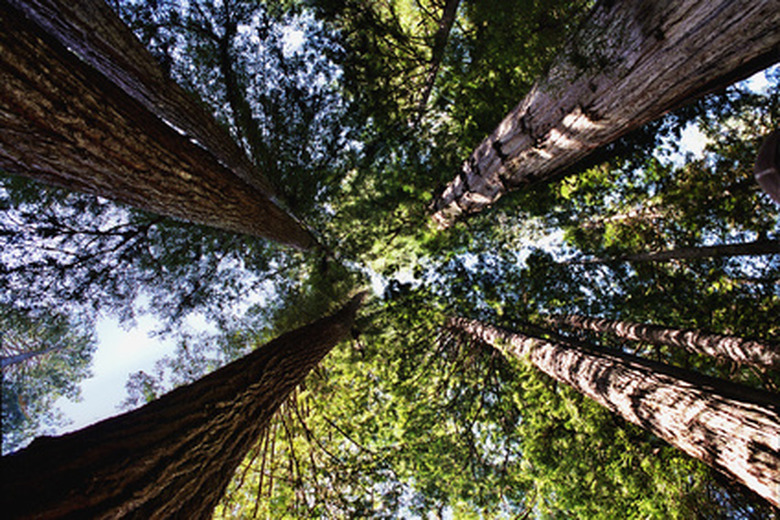How To Care For Sequoia Trees
Things Needed
- Watering tool
- Stick (optional)
- Sequoia fertilizer
Sequoia trees, also called coastal redwoods, are majestic coniferous evergreens. Sequoia sempervirens is the only living species of sequoia left on the earth, and they are the tallest trees in the world, according to information published by Stanford University. Although these giant trees can reach over 300 feet in height, they are usually much smaller when grown in a home landscape, and can be pruned to control size. Sequoias are fast-growing and hardy when planted in the right conditions and with proper care.
Step 1
Plant sequoia trees at least 15 feet from each other, especially if planting for screening purposes, writes Edward F. Gilman, a horticulturist with the University of Florida. In Oregon and northern California, these trees are best planted as standalone specimens, as they will grow quickly in their natural habitat.
Step 2
Choose a location that receives bright sunlight. If you live in a hot climate, however, plant your sequoia where it will receive morning sun followed by afternoon shade, as young trees may be scorched by direct sunlight. These trees grow best in United States Department of Agriculture hardiness zones 7 through 10A.
- Sequoia trees, also called coastal redwoods, are majestic coniferous evergreens.
- Although these giant trees can reach over 300 feet in height, they are usually much smaller when grown in a home landscape, and can be pruned to control size.
Step 3
Water frequently, but not so often that the soil is continually soggy. The small feeder roots of the sequoia are fragile and will easily rot in too-wet conditions. In fact, even walking on the ground around a sequoia can damage the roots, especially in the case of young trees, according to information published by the Giant Sequoia Redwood Landscape Tree and Bonsai Nursery. Let the soil dry out a bit before watering again. Test the dryness of the soil by inserting a finger down to the top of the first root you encounter. You can also use a stick. If it is dry to the root, go ahead and water. Because this tree drinks very rapidly and deeply, this could still signify almost daily watering during hot spells.
- Water frequently, but not so often that the soil is continually soggy.
- In fact, even walking on the ground around a sequoia can damage the roots, especially in the case of young trees, according to information published by the Giant Sequoia Redwood Landscape Tree and Bonsai Nursery.
Step 4
Fertilize your sequoia with redwood fertilizer. This is available in some garden centers in Oregon and California. Otherwise, you can find it online. Apply according to the directions on the label as per the size and age of your tree.
Step 5
Prune off dead limbs as needed, taking care not to damage the bark of the tree. Rake away debris out to the edge of the canopy crown to prevent fungi and insect pests from developing in the soil under the tree.
